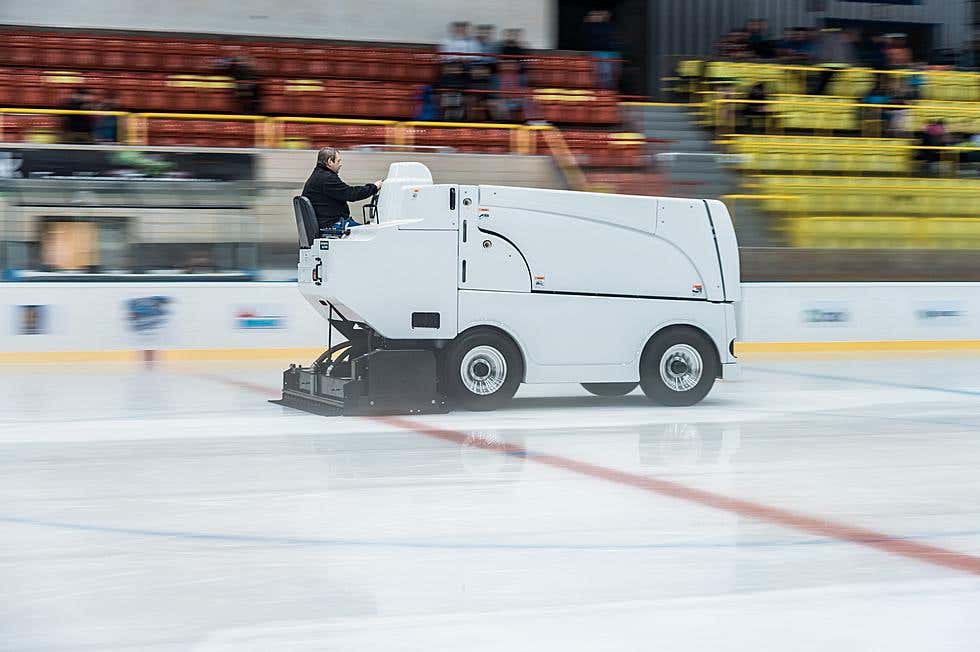Researchers demonstrate ‘self-healing’ ice — Zamboni’s need not apply
Scientists from the Van der Waals-Zeeman Institute in Amsterdam have shown that ice, when left alone for long enough, can heal itself.

[Feb 7, 2022: Nick Beston, Universiteit van Amsterdam]
Scientists from the Van der Waals-Zeeman Institute at the University of Amsterdam have shown that ice, when left alone for long enough, can heal itself. (CREDIT: Creative Commons)
The Winter Olympics in Beijing are under way. Dutch athletes are hoping to win many medals, especially in skating events. To improve the performance of the athletes, big ice resurfacers smoothen the ice rink in between races.
The question is: is that really necessary? To some extent it’s not: scientists from the Van der Waals-Zeeman Institute at the University of Amsterdam have shown that ice, when left alone for long enough, can heal itself.
More than 160 years ago, a similar effect to what happens on a speed skating rink attracted the attention of physicist Michael Faraday. He performed an experiment that everyone can do at home: take two ice cubes, stack them on top of each other in a freezer, and check after an hour whether you can still pull them apart. The answer is: no, you can’t. Faraday described this sticky phenomenon in one of his well-known Christmas lectures. His conclusion was that a small layer of water is present on the outside of the ice cube, even when stored at a temperature far below the freezing point. When you stack two ice cubes – according to Faraday – this layer freezes, making it impossible to separate the two cubes.
It took more than a century for physicists to find the courage to contradict a great scientist like Faraday. It was discovered that molecules on the surface of the ice are not necessarily fluid, but are certainly bound more loosely than in the centre of the crystal. As a result, it takes a relatively small amount of energy to move those molecules across the surface, or even take them off.
Related Stories
Debate in the world of ice
Three new theories emerged that could potentially describe the dynamics of the outer layer of ice molecules correctly. A debate in the world of ice researchers began, between supporters of four different explanations:
The always present thin water layer of Faraday,
The possibility for molecules at the ice surface to sublimate – become a gas directly from the solid state – and then condensate again.
The presence of water molecules inside the ice crystal (so not only at the surface) that can rearrange themselves into a new configuration,
The possibility that water molecules on the surface of an ice crystal can change positions, like a slide puzzle.
Healing effect
In the new research, physicist Menno Demmenie and his colleagues did not stack ice cubes, but instead manipulated the ice surface by applying a tiny cut in it. They then observed the cut for a long time. After several hours, it turned out that the cut had disappeared and a new perfect layer of ice had formed. The ice had ‘healed itself’. In the animation below it is clearly visible how a cut disappears over time.
Measurement of a self-healing scratch with an initial depth of approximately 2.5 micrometer, induced in a pristine ice layer of 247 Kelvin. Total healing time: 205 minutes. (CREDIT: Menno Demmenie, Creative Commons)
Next, the healing effect was measured for 30 different scratches at 6 different ice temperatures. Statistically comparing the four candidate models to the data, the researchers were able to conclude that the healing effect is caused by local sublimation and condensation – option 2 in the list above. Put differently: water molecules briefly detach from the ice surface, and then condense inside the cut, slowly filling it up.
Extended breaks?
Instead of using ice resurfacers, we could therefore extend the breaks in between skating races by several hours, after which the ice will be spick and span again. However, besides the lengthy breaks, there is a second caveat: as in the experiment, the vapor pressure of the ice and the air must be carefully kept in equilibrium, to prevent moisture from the air condensating on the ice and deteriorating the track again. For now, we’ll keep using ice resurfacers.
For more science and technology news stories check out our New Discoveries section at The Brighter Side of News.
Note: Materials provided above by Universiteit van Amsterdam. Content may be edited for style and length.
Like these kind of feel good stories? Get the Brighter Side of News' newsletter.
Tags: #New_Discoveries, #Ice, #Sports, #Hockey, #Melting, #Science, #Research, #The_Brighter_Side_of_News



